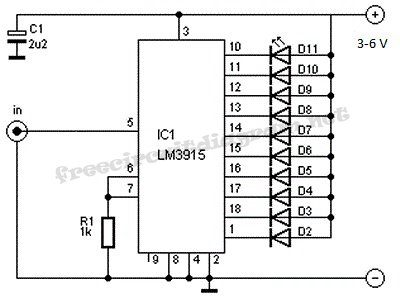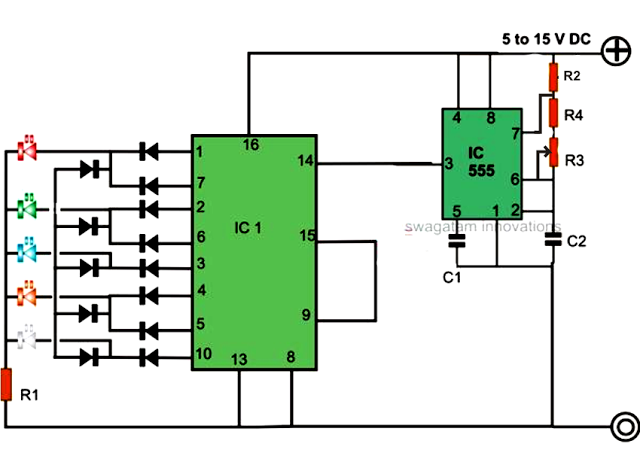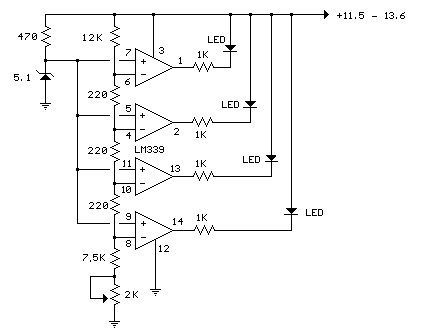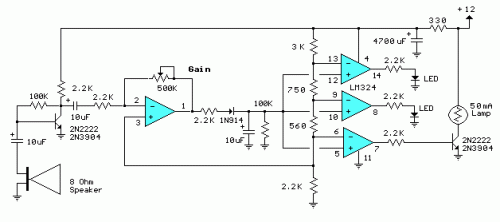
SIMPLE INDUCTANCE METER
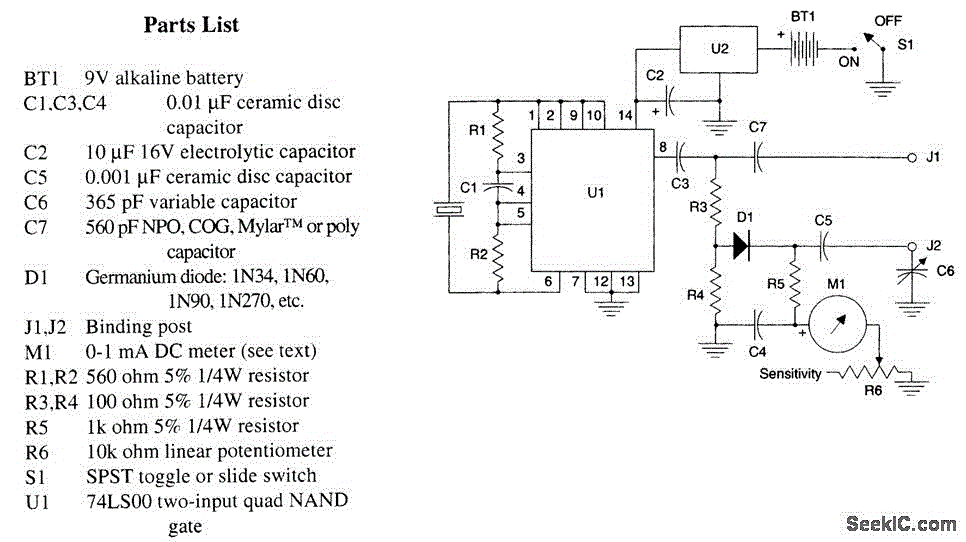
This figure illustrates the schematic diagram of a simple inductance meter. U1 is a 74LS00 two-input quad NAND gate logic integrated circuit. Two resistors, a capacitor, and a surplus microprocessor crystal create a stable crystal oscillator operating close to the frequency marked by the crystal. The RF voltage is extracted from pin 8 through isolation capacitor C3 for measurement.
The simple inductance meter circuit operates using a crystal oscillator configuration based on the 74LS00 NAND gate IC. The oscillator's frequency is determined by the values of the resistors and capacitor connected to the NAND gates. The circuit's design allows for precise frequency generation, which is crucial for accurately measuring inductance.
In this configuration, the two resistors (R1 and R2) are arranged in a voltage divider setup, which helps establish the biasing conditions for the NAND gates. The capacitor (C1) is responsible for setting the timing characteristics of the oscillator, while the surplus microprocessor crystal (X1) defines the frequency of oscillation. The combination of these components ensures that the circuit generates a stable RF signal.
The RF voltage is taken from pin 8 of the NAND gate, which outputs the oscillating signal. This signal passes through isolation capacitor C3 to prevent any DC offset from affecting the measurement. The output can then be connected to a measuring device, such as an oscilloscope or frequency counter, to determine the inductance of the component under test. The inductance can be inferred from the frequency deviation caused by the inductive load, allowing for precise measurement in various applications.
Overall, this schematic provides a clear representation of the components and their interconnections, making it suitable for those looking to build or understand a simple inductance meter circuit.This figure shows the schematic diagram of the simple inductance meter. U1, a 74LS00 two-input quad NAND gate logic integrated circuit, two resistors, a capacitor, and a surplus microprocessor crystal form a stable crystal oscillator near the marked frequency of the crystal. The RF voltage is taken from pin 8 through isolation capacitor C3 to the measuring.. 🔗 External reference
The simple inductance meter circuit operates using a crystal oscillator configuration based on the 74LS00 NAND gate IC. The oscillator's frequency is determined by the values of the resistors and capacitor connected to the NAND gates. The circuit's design allows for precise frequency generation, which is crucial for accurately measuring inductance.
In this configuration, the two resistors (R1 and R2) are arranged in a voltage divider setup, which helps establish the biasing conditions for the NAND gates. The capacitor (C1) is responsible for setting the timing characteristics of the oscillator, while the surplus microprocessor crystal (X1) defines the frequency of oscillation. The combination of these components ensures that the circuit generates a stable RF signal.
The RF voltage is taken from pin 8 of the NAND gate, which outputs the oscillating signal. This signal passes through isolation capacitor C3 to prevent any DC offset from affecting the measurement. The output can then be connected to a measuring device, such as an oscilloscope or frequency counter, to determine the inductance of the component under test. The inductance can be inferred from the frequency deviation caused by the inductive load, allowing for precise measurement in various applications.
Overall, this schematic provides a clear representation of the components and their interconnections, making it suitable for those looking to build or understand a simple inductance meter circuit.This figure shows the schematic diagram of the simple inductance meter. U1, a 74LS00 two-input quad NAND gate logic integrated circuit, two resistors, a capacitor, and a surplus microprocessor crystal form a stable crystal oscillator near the marked frequency of the crystal. The RF voltage is taken from pin 8 through isolation capacitor C3 to the measuring.. 🔗 External reference
